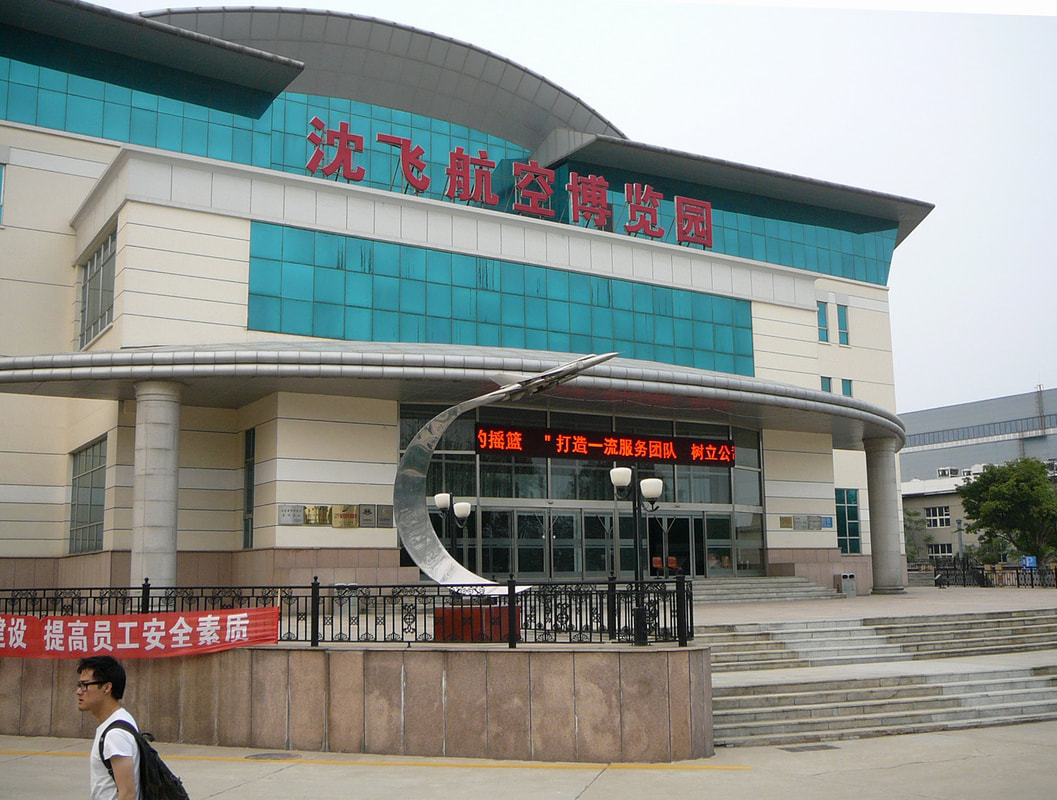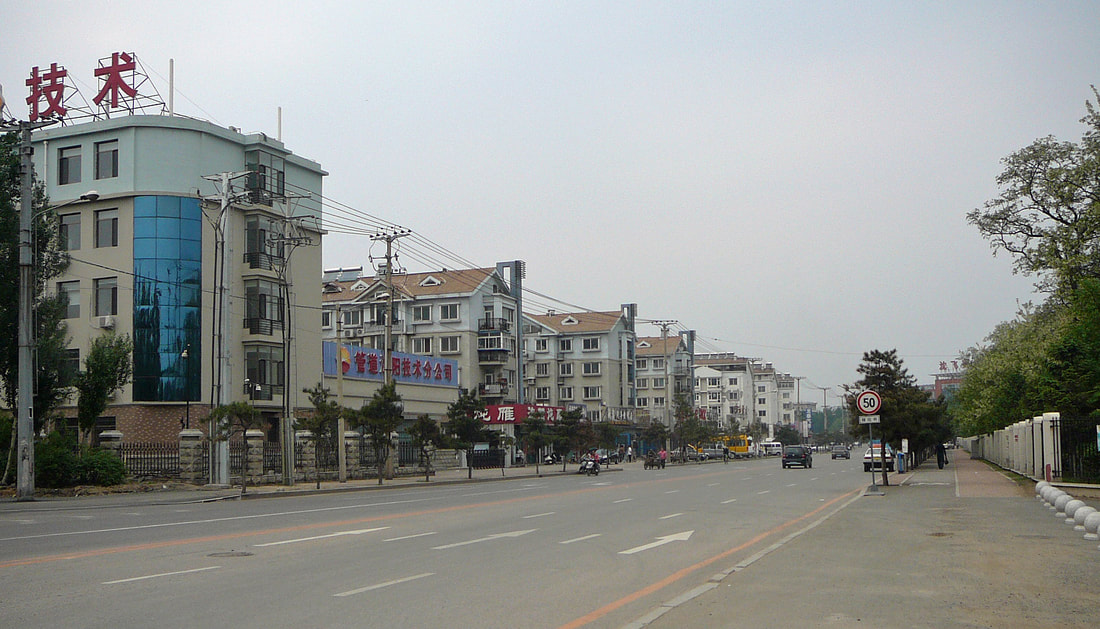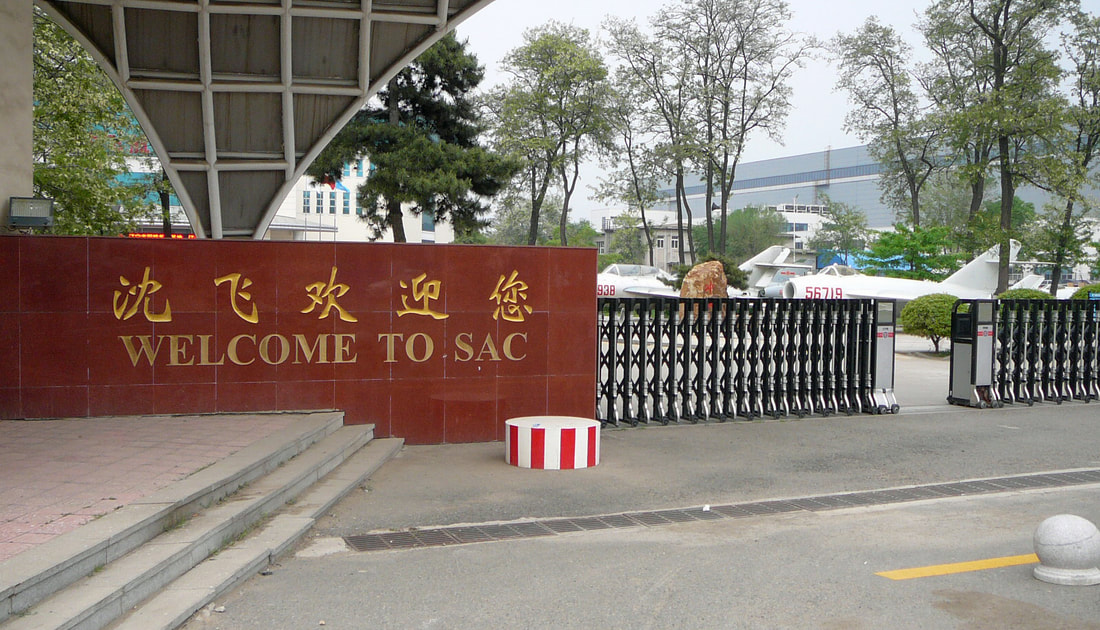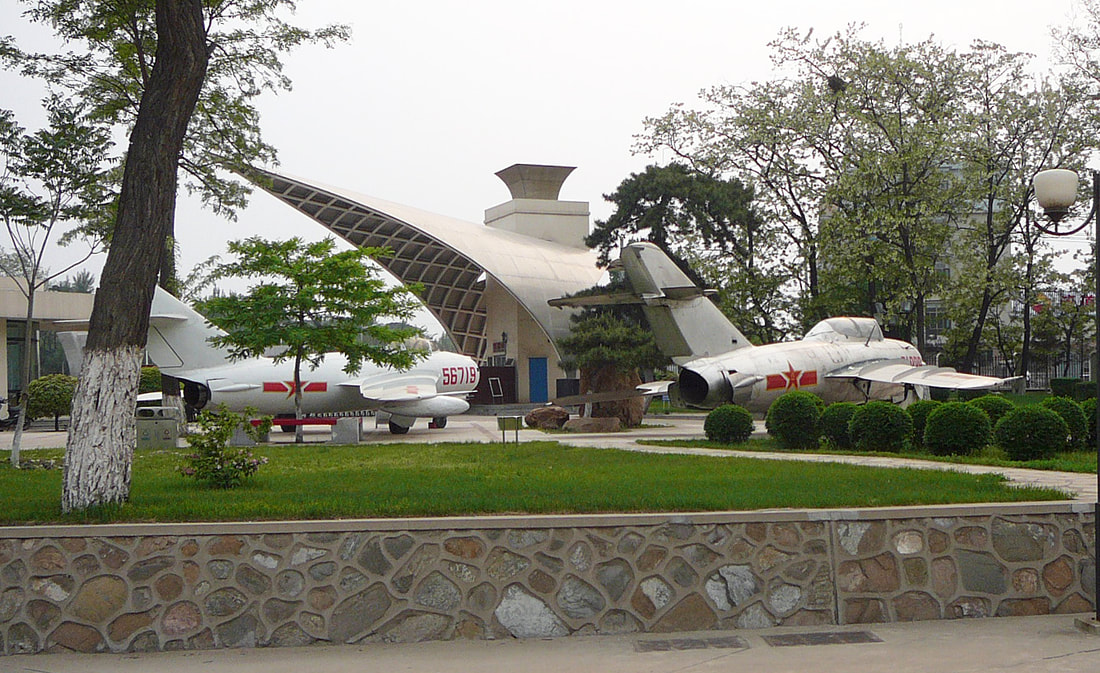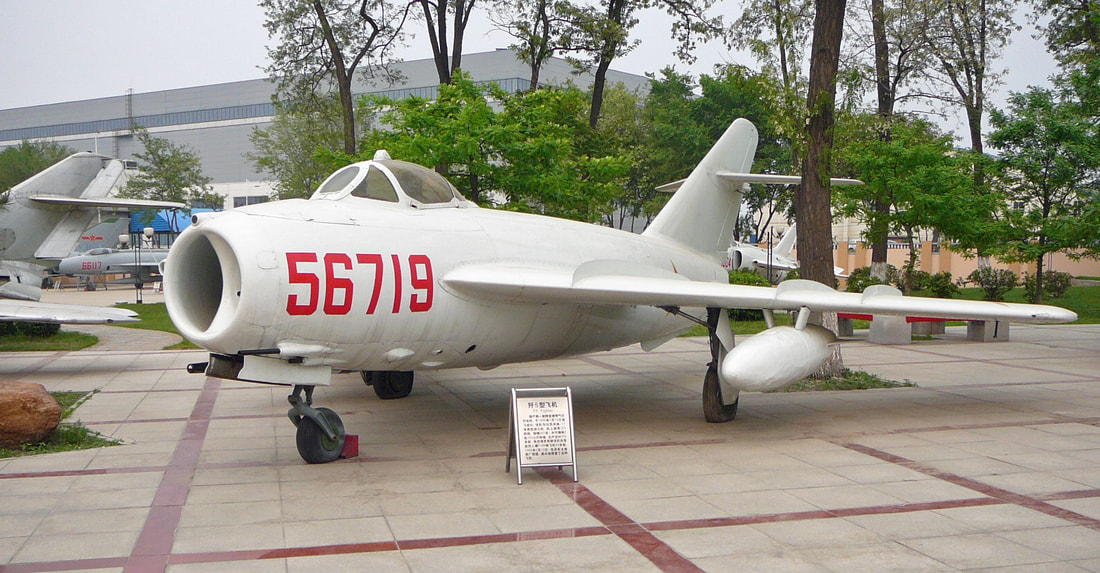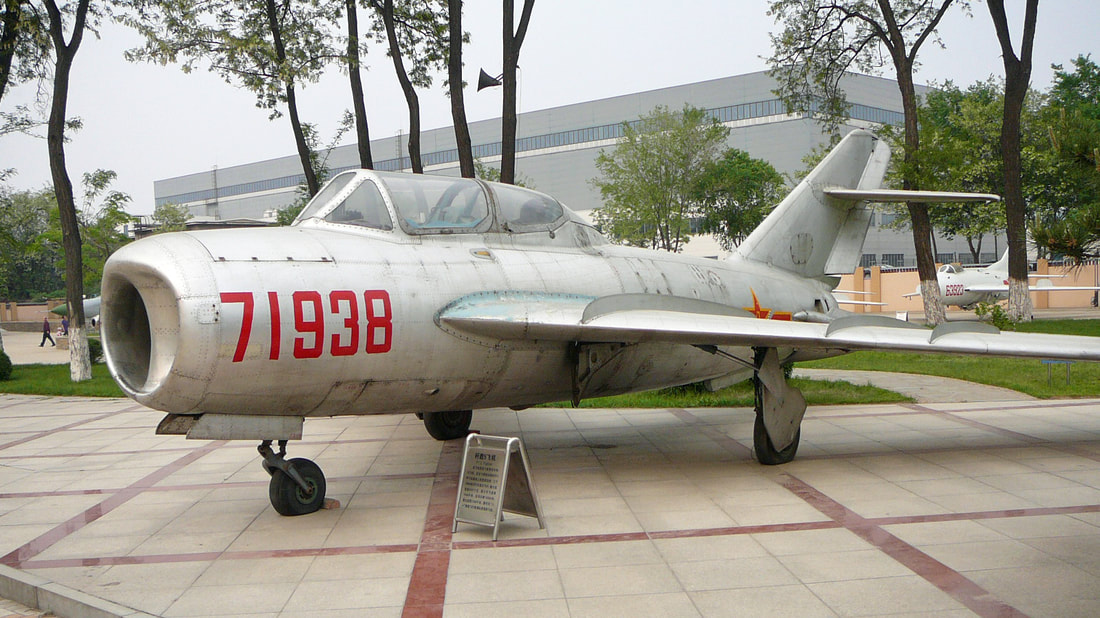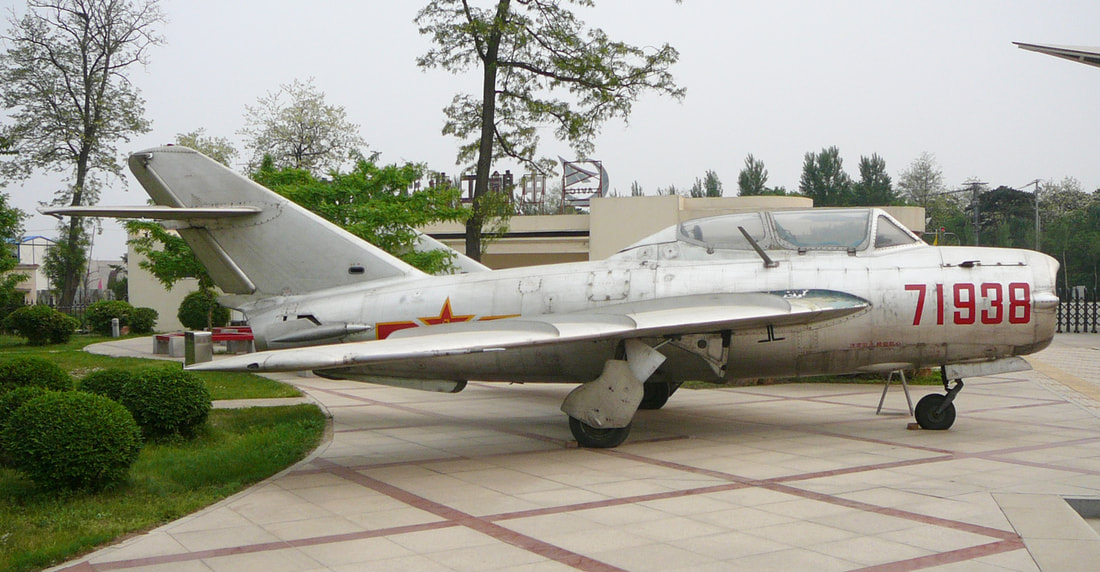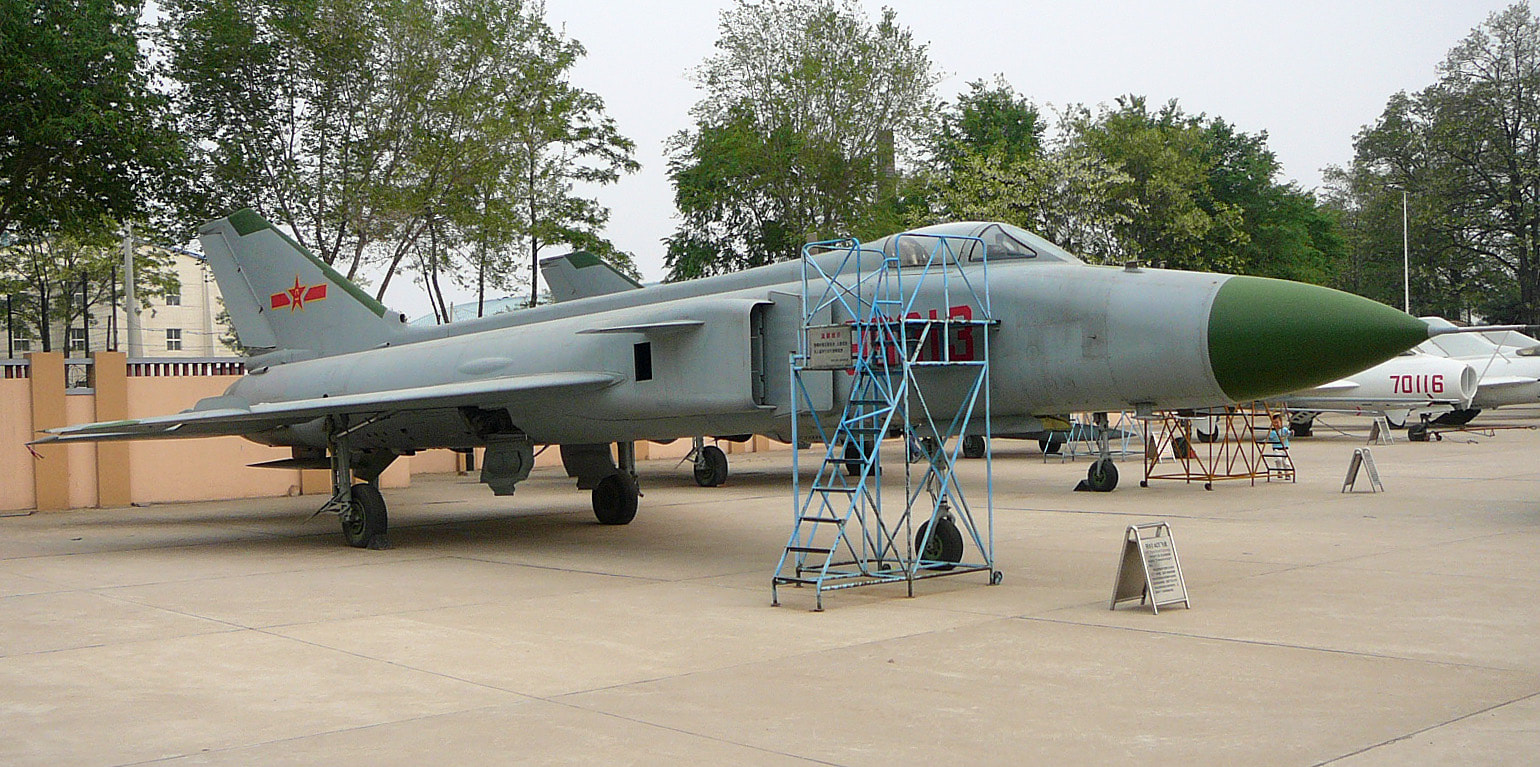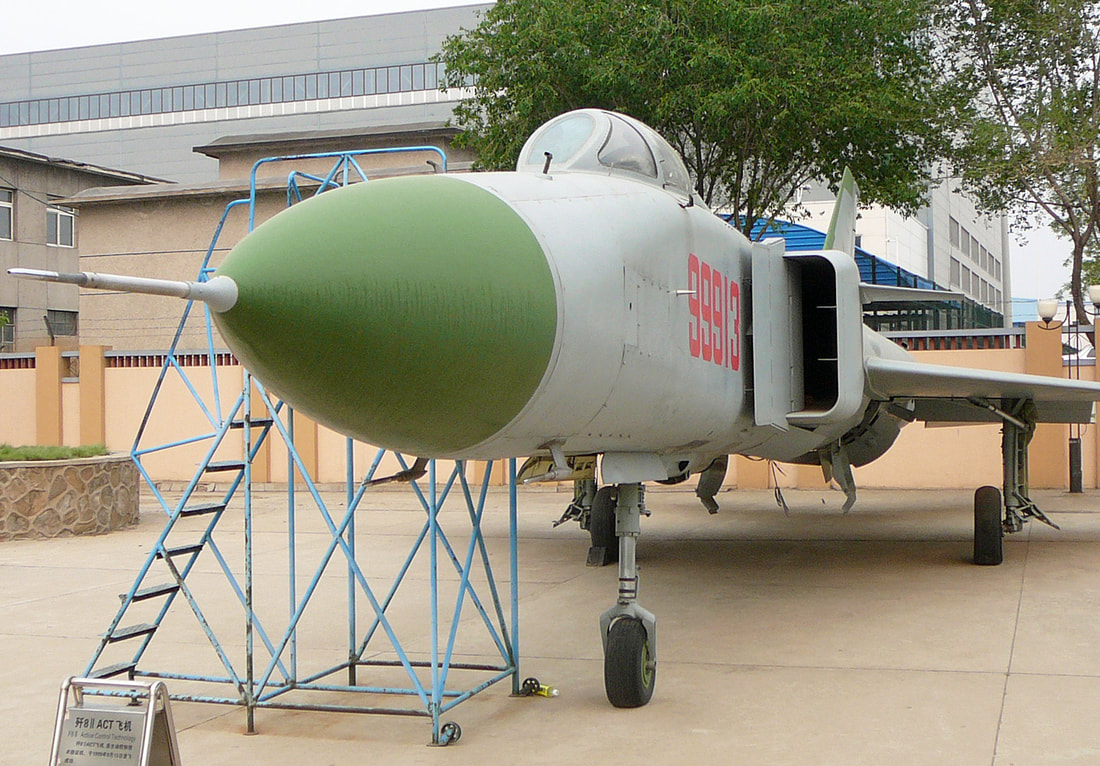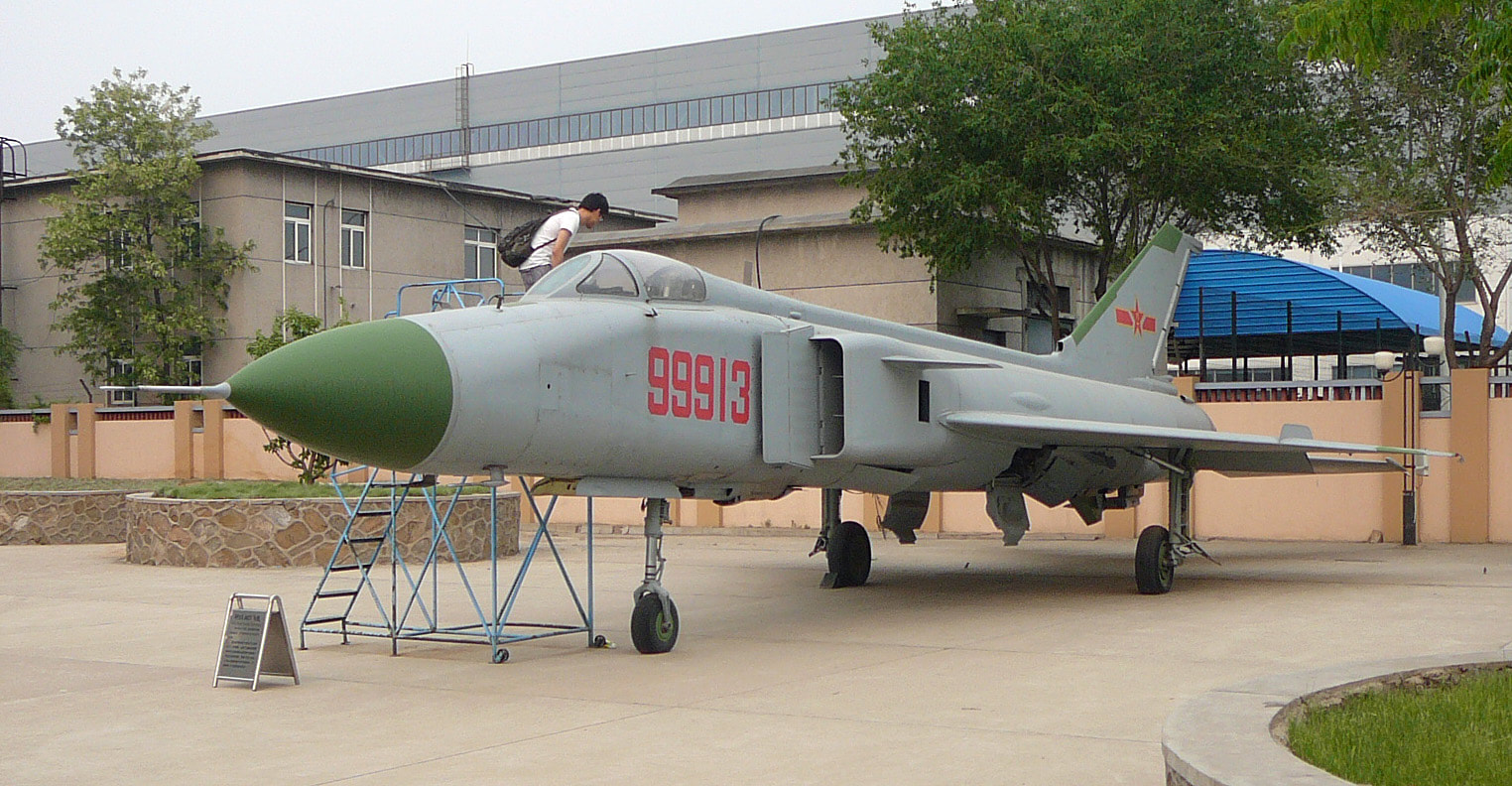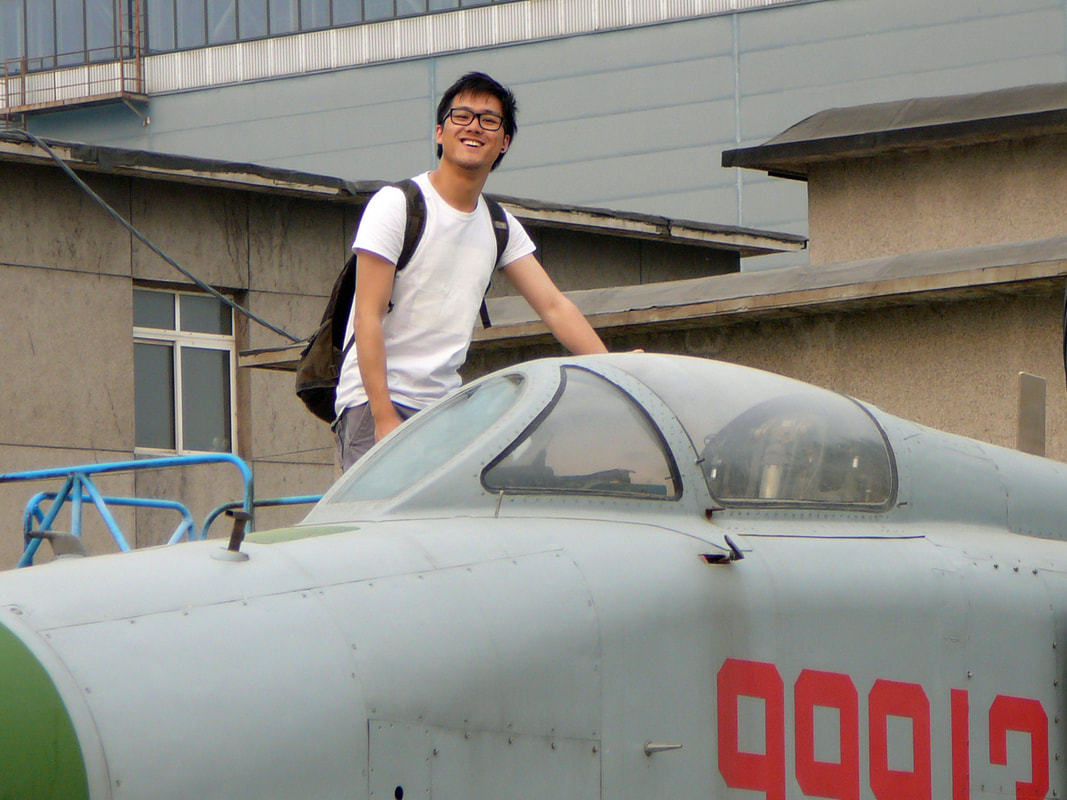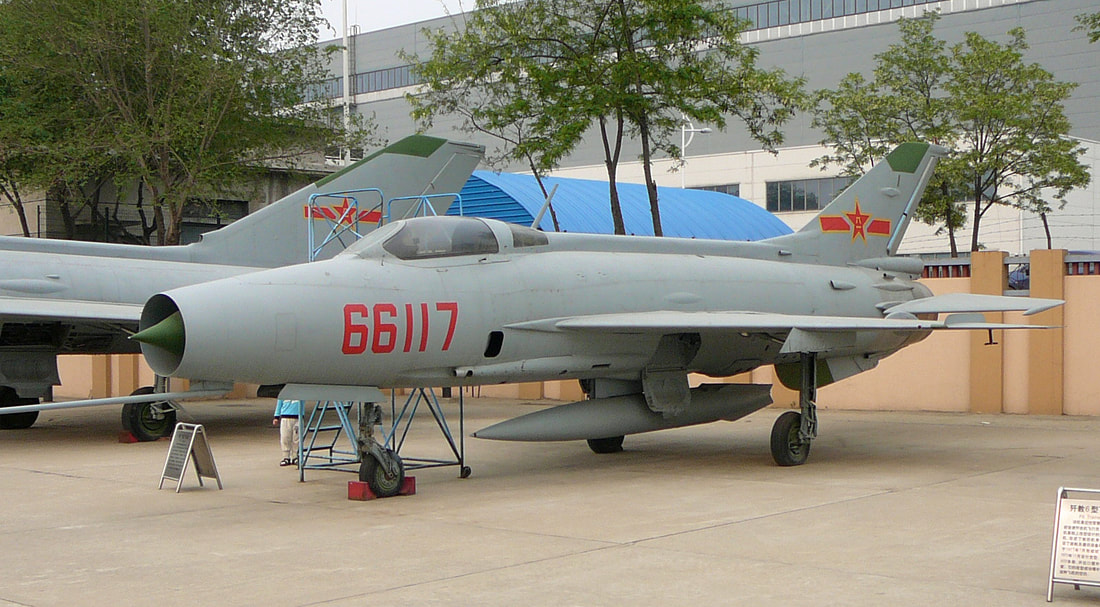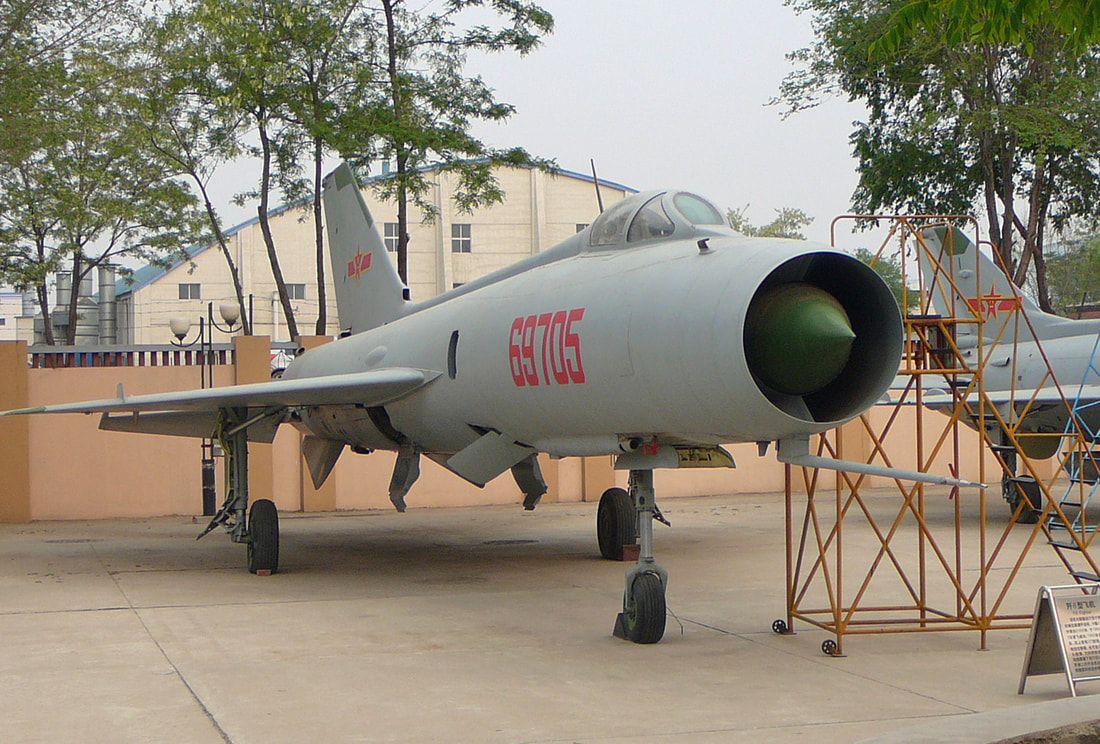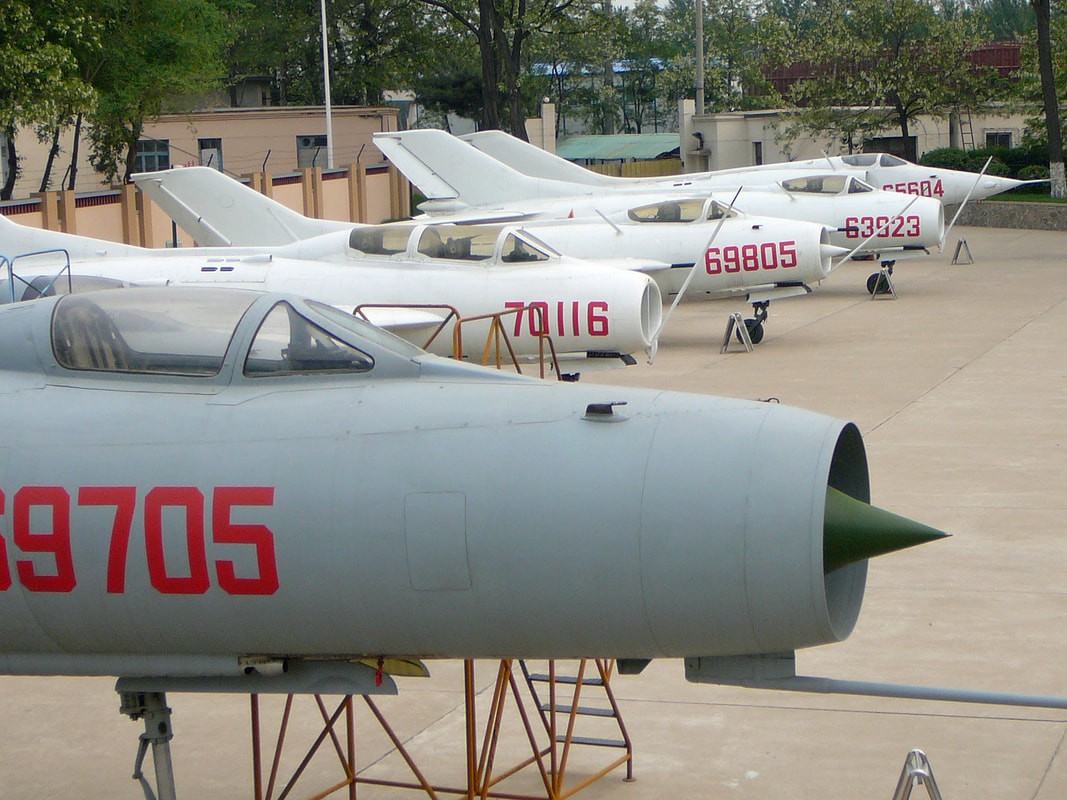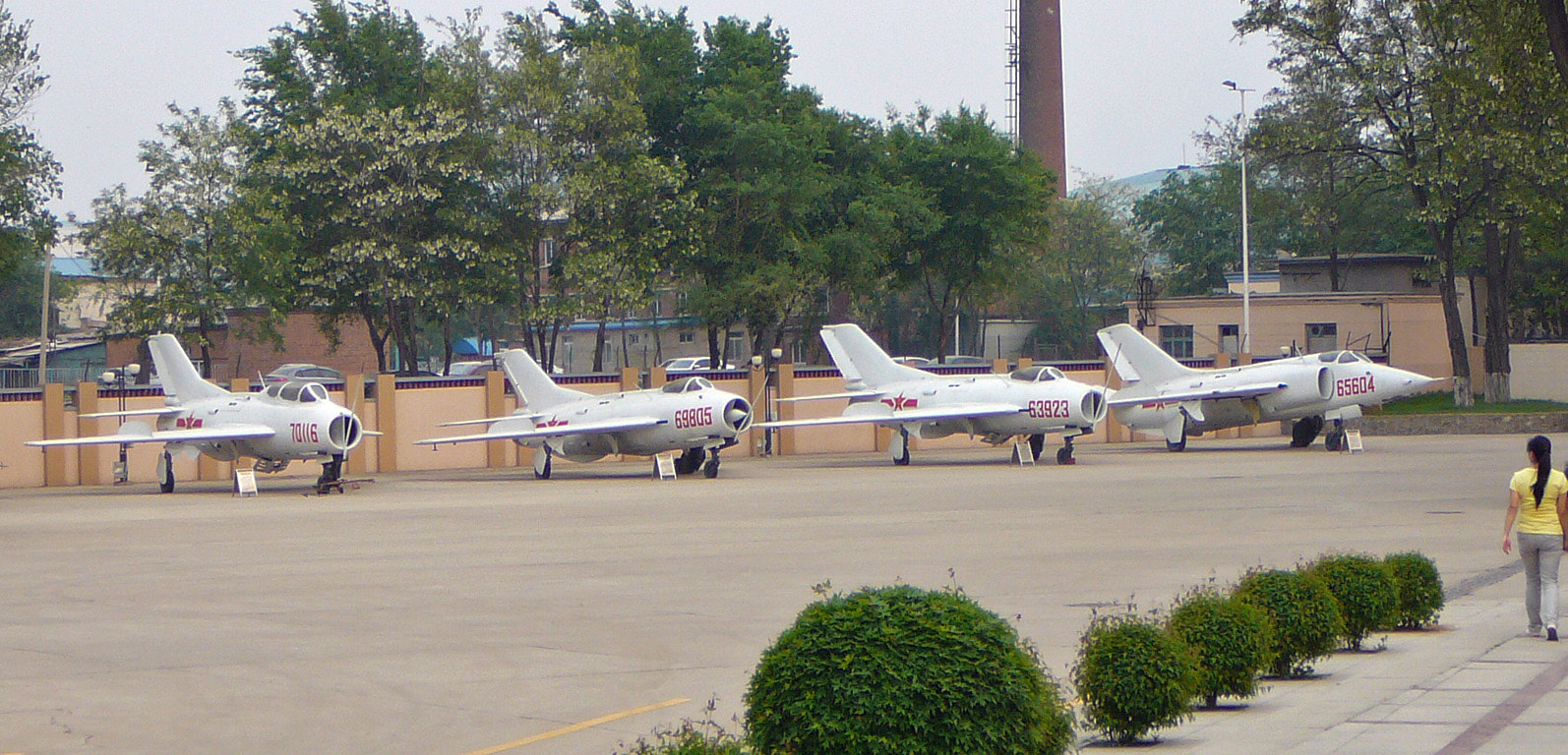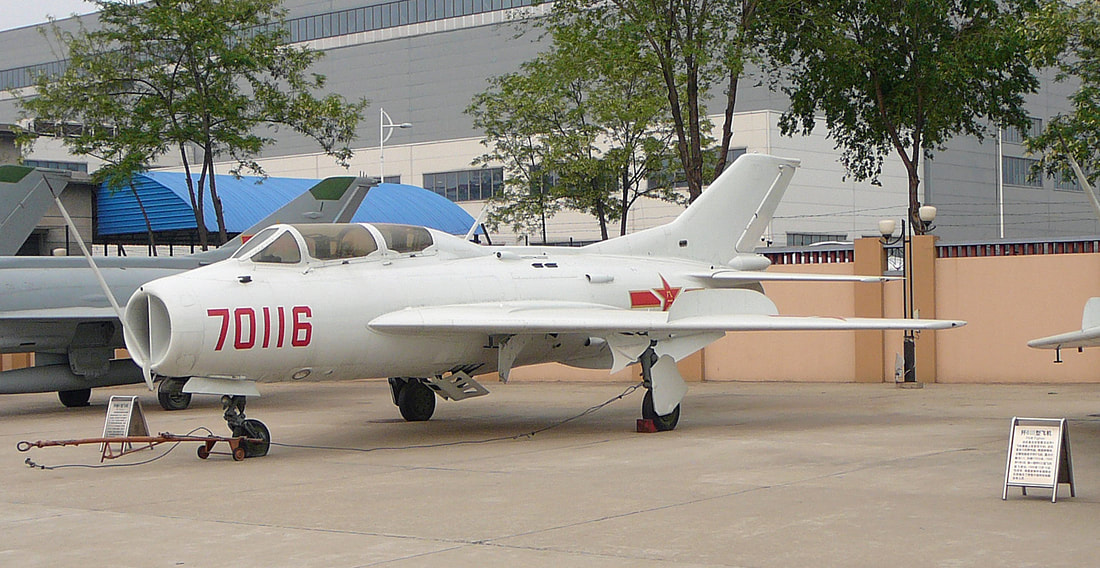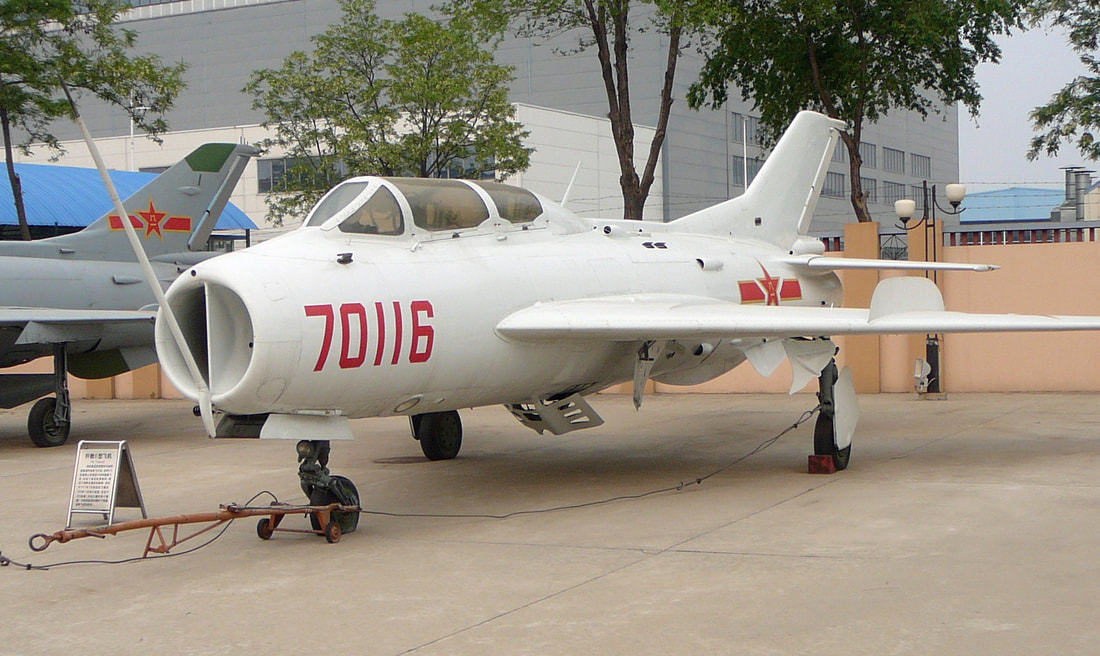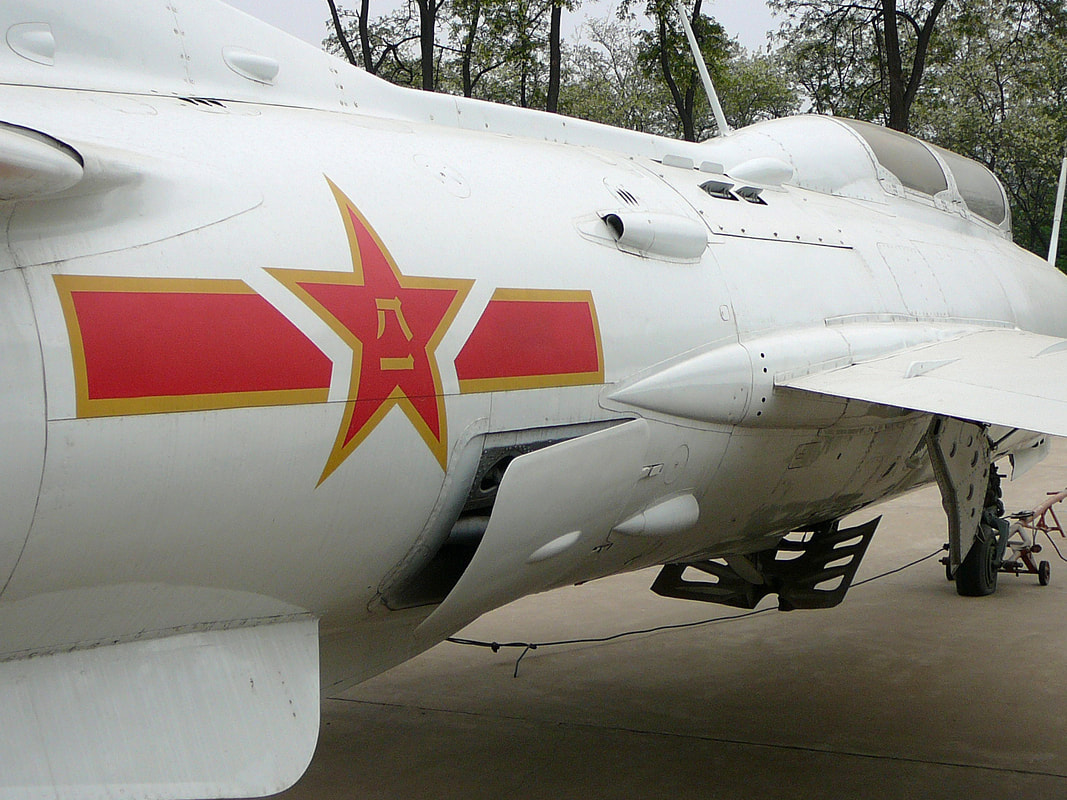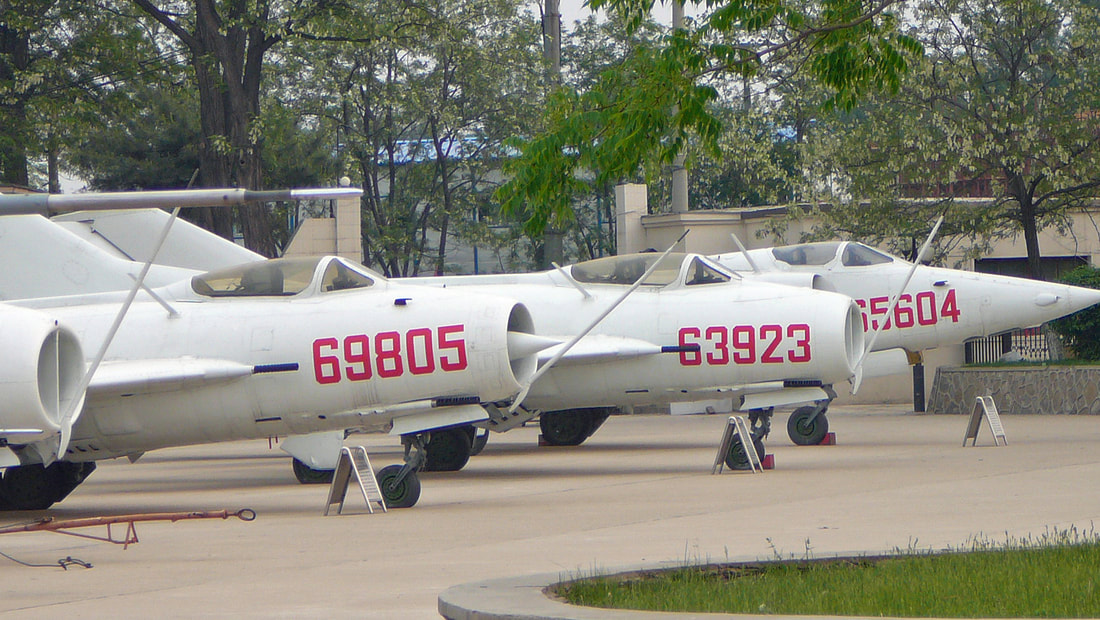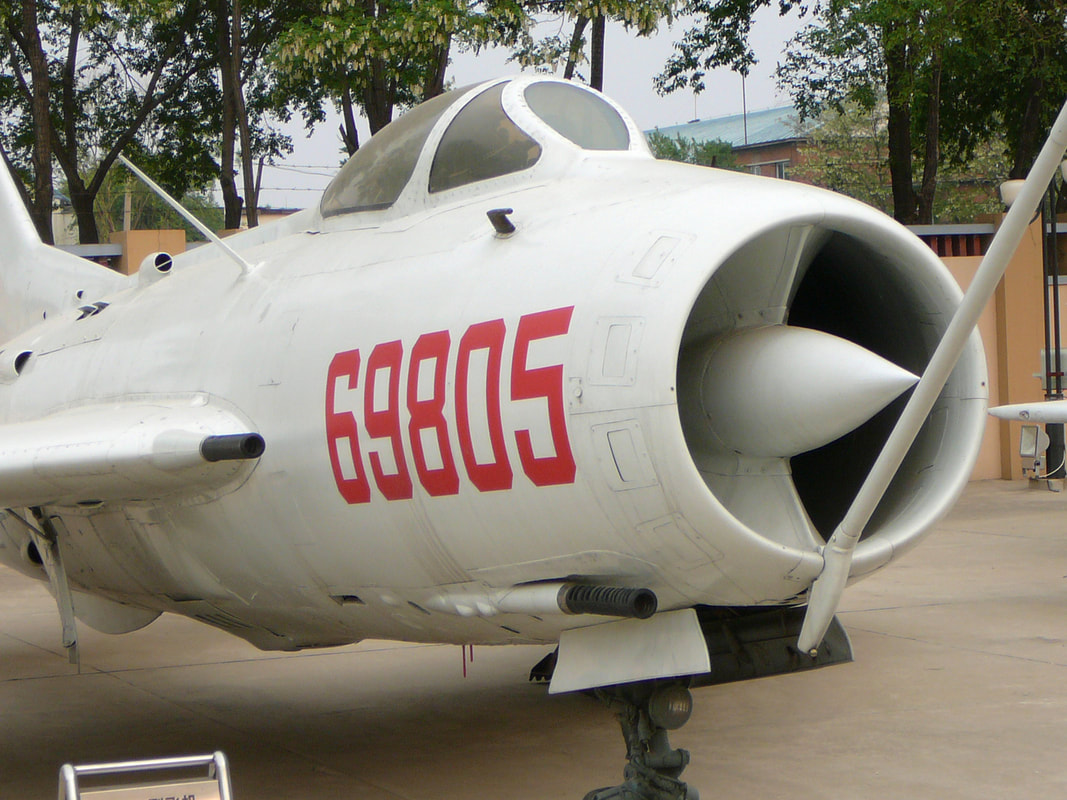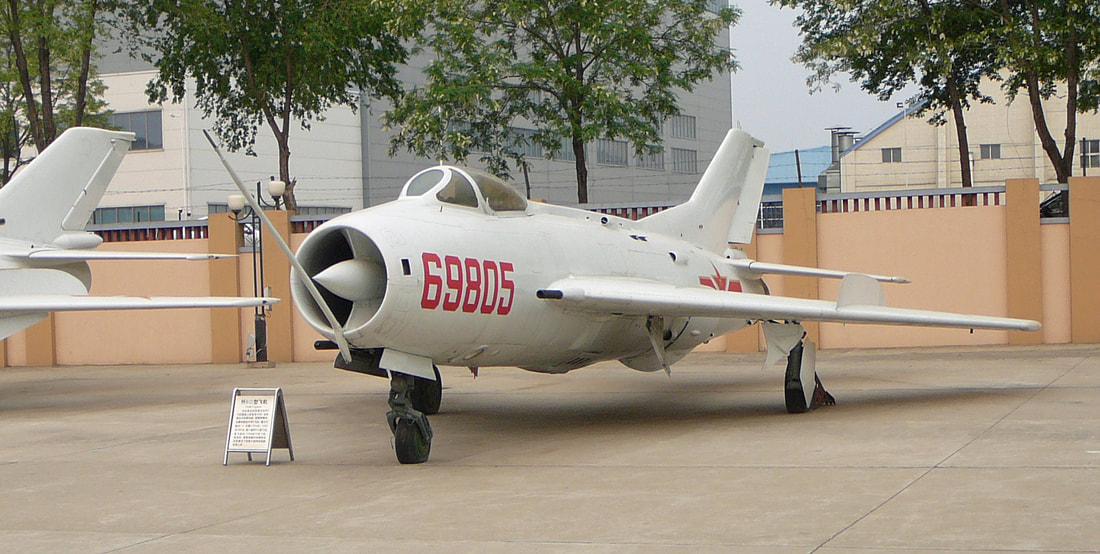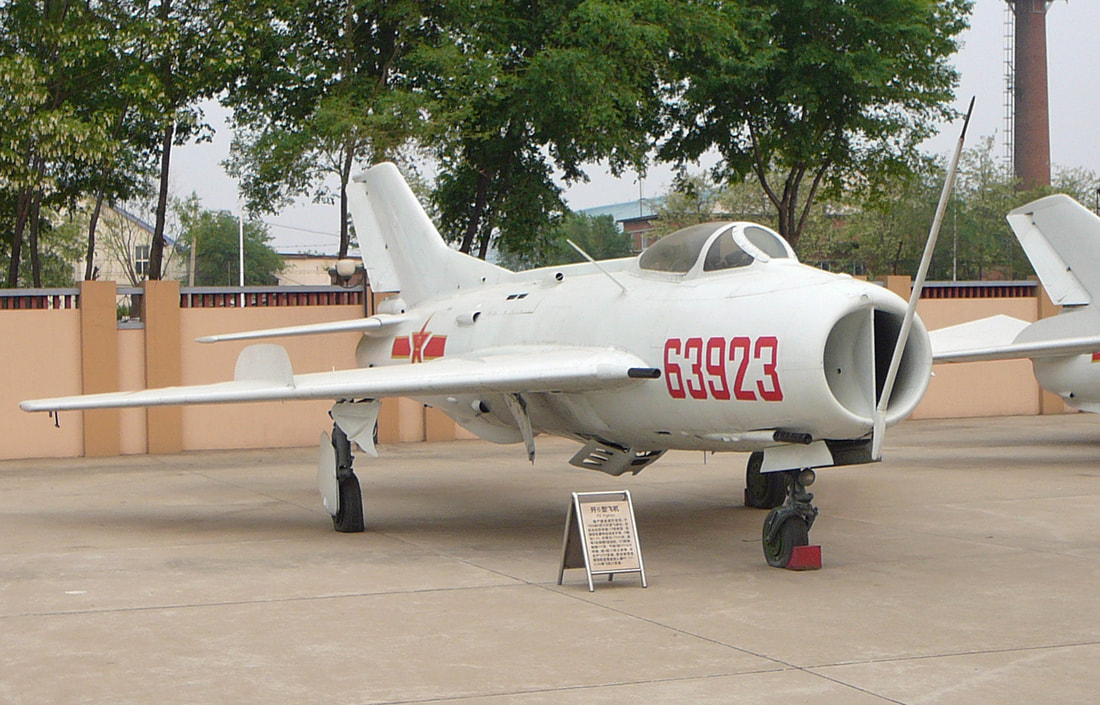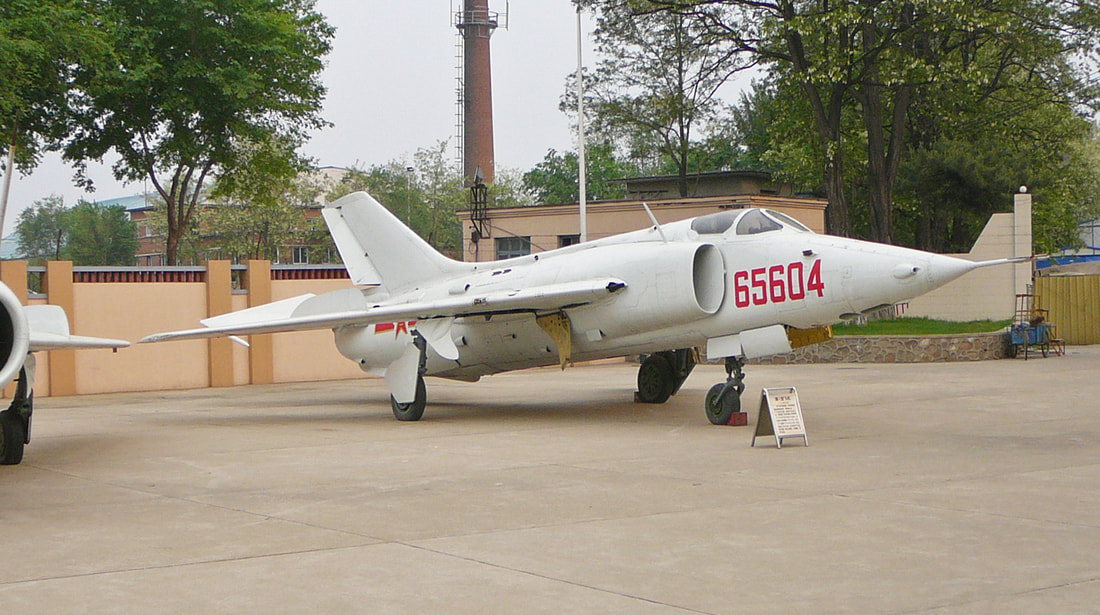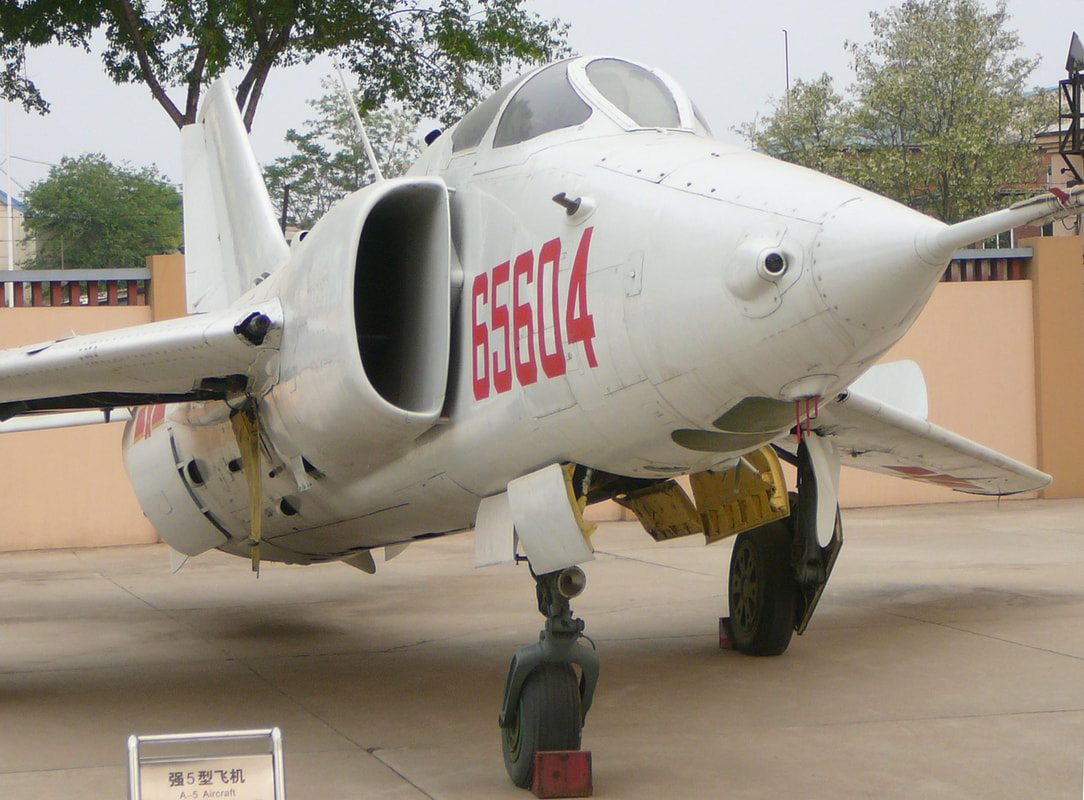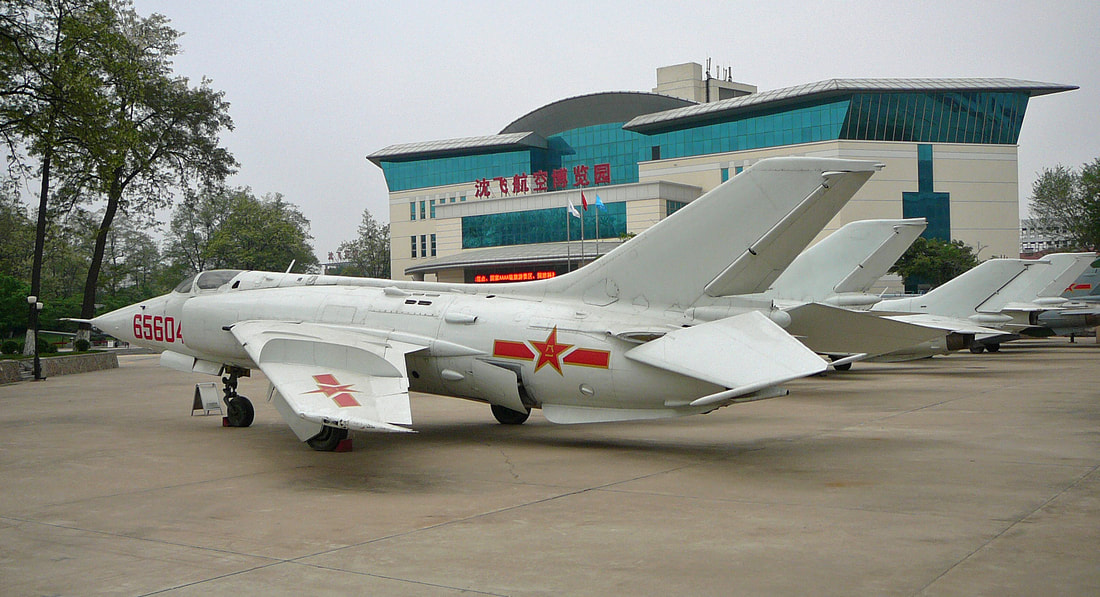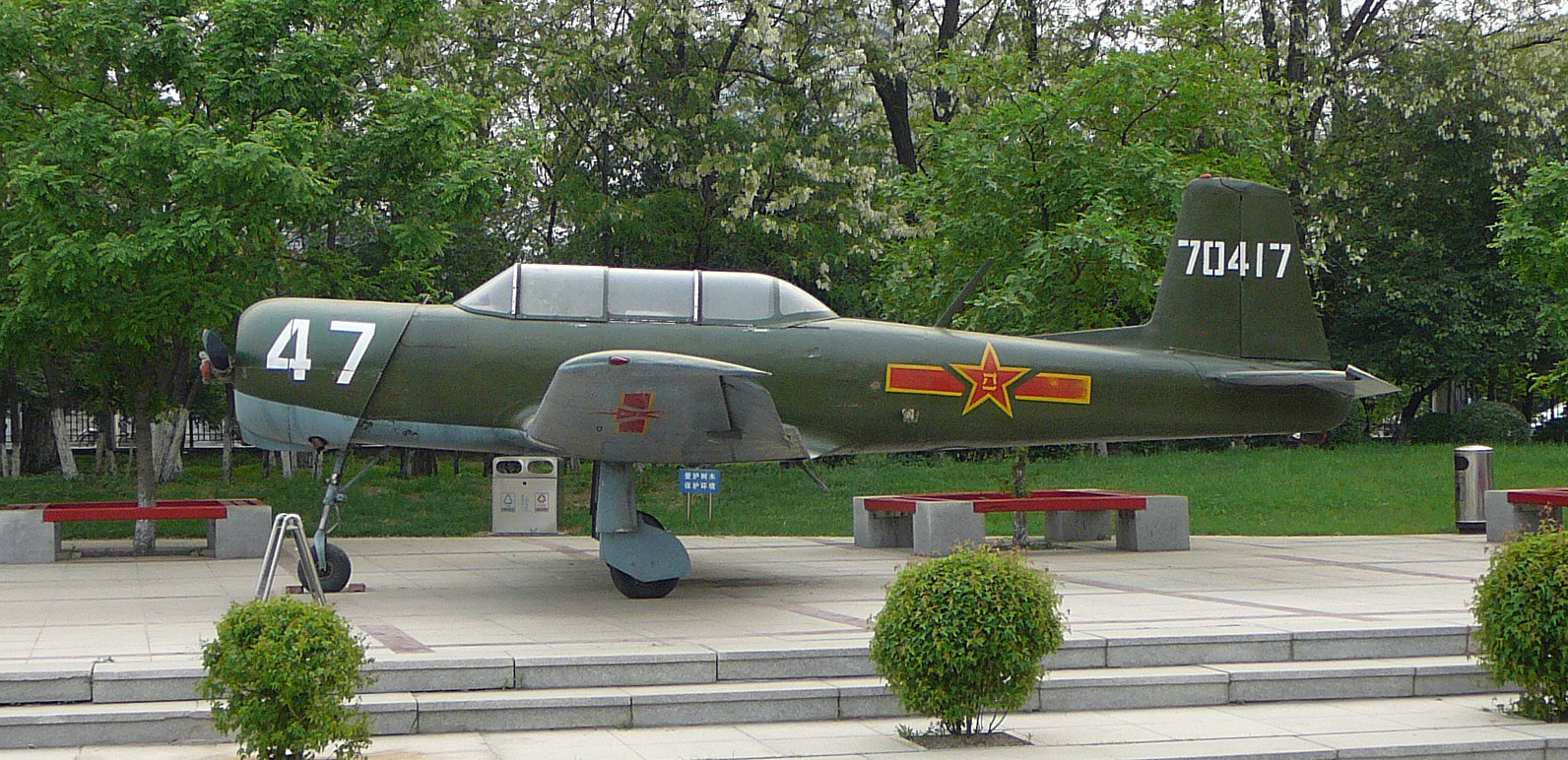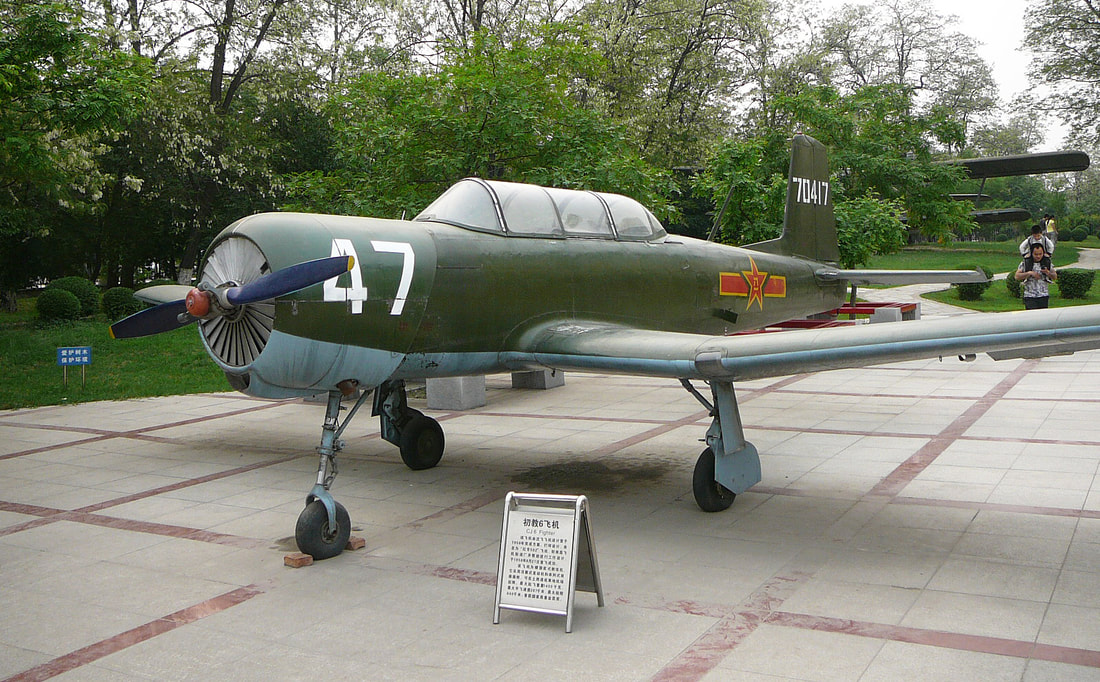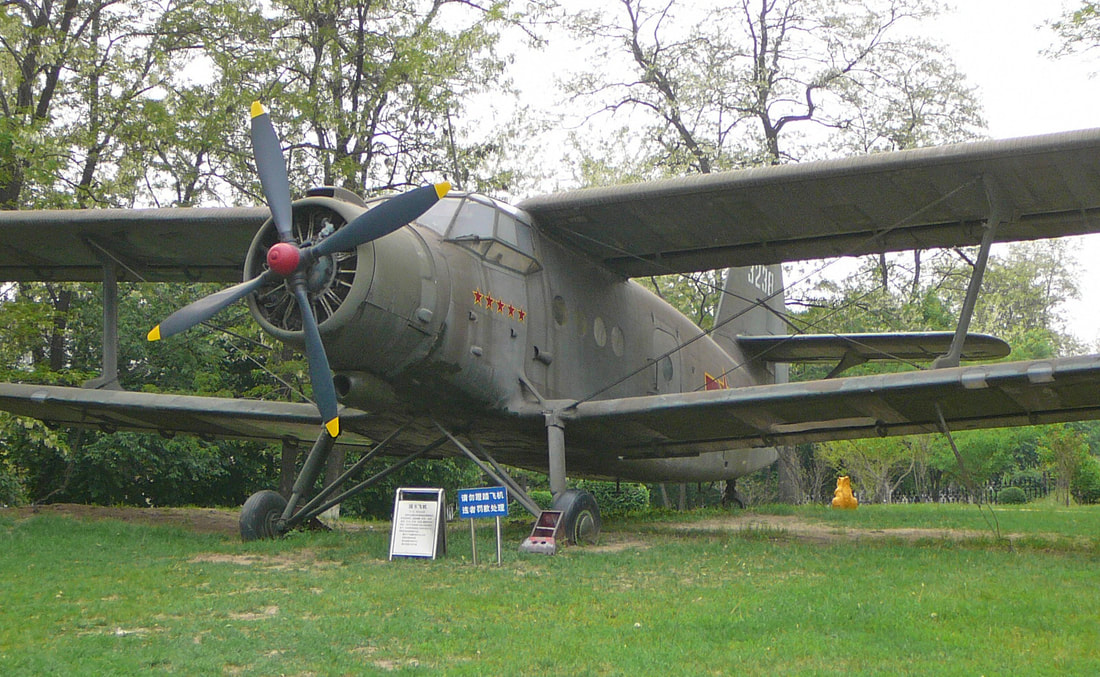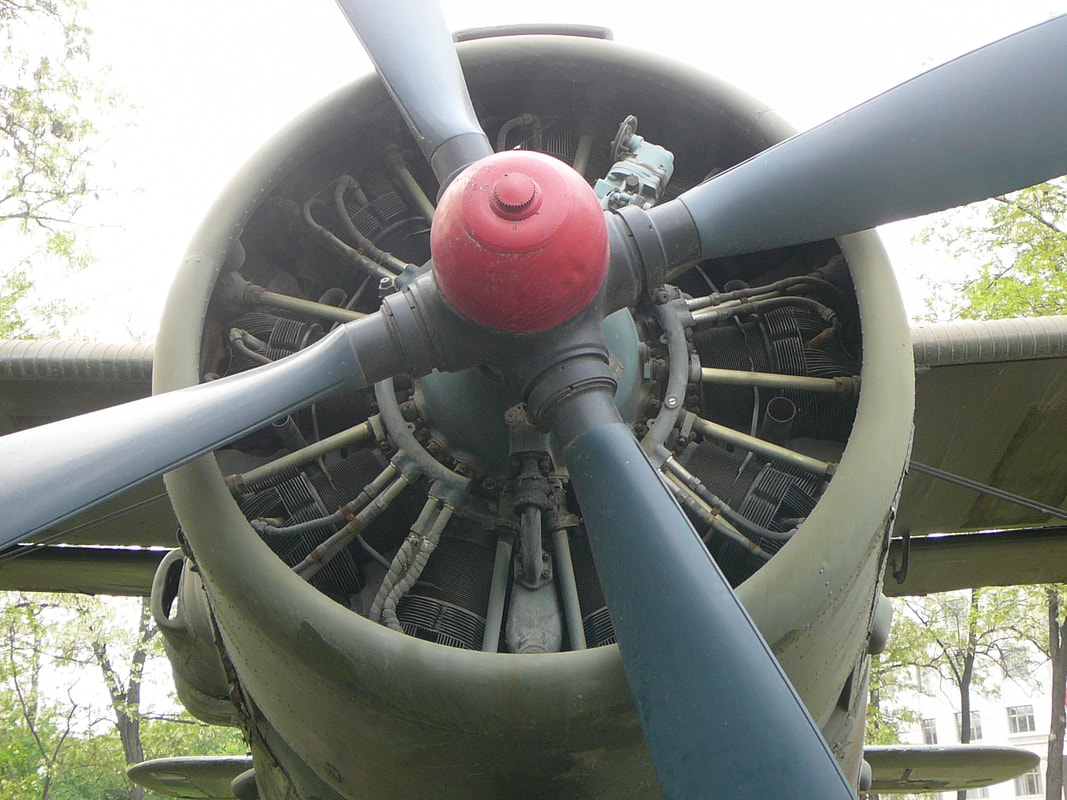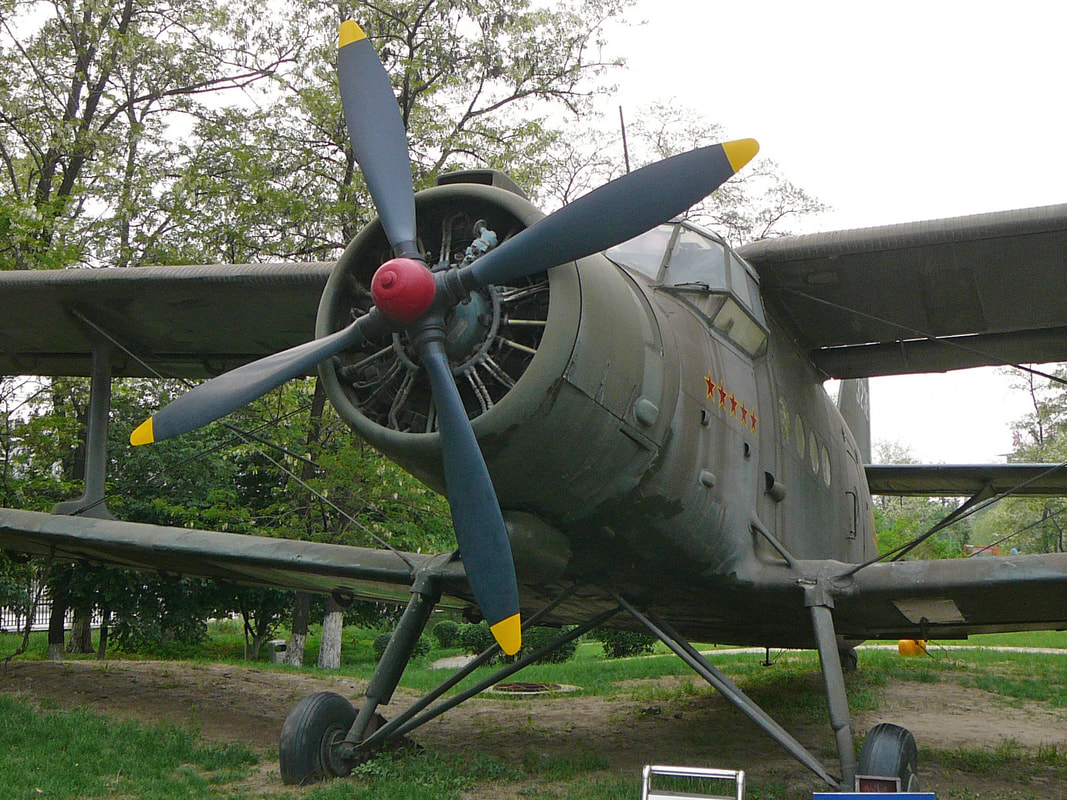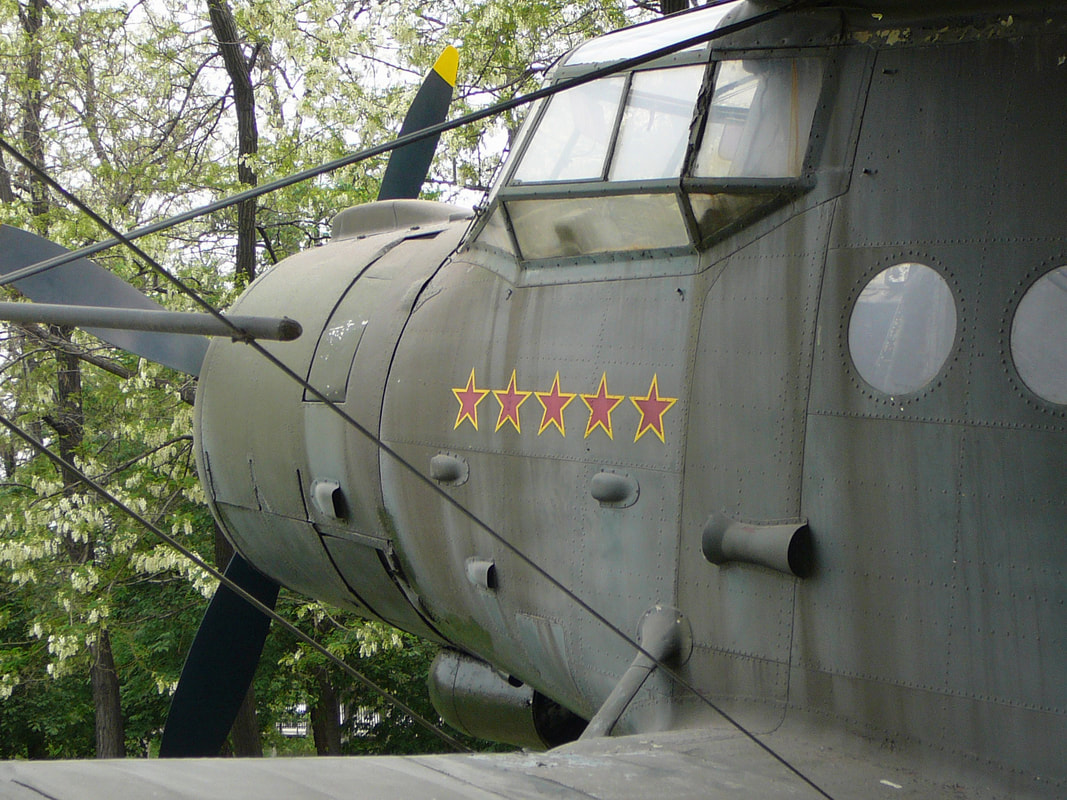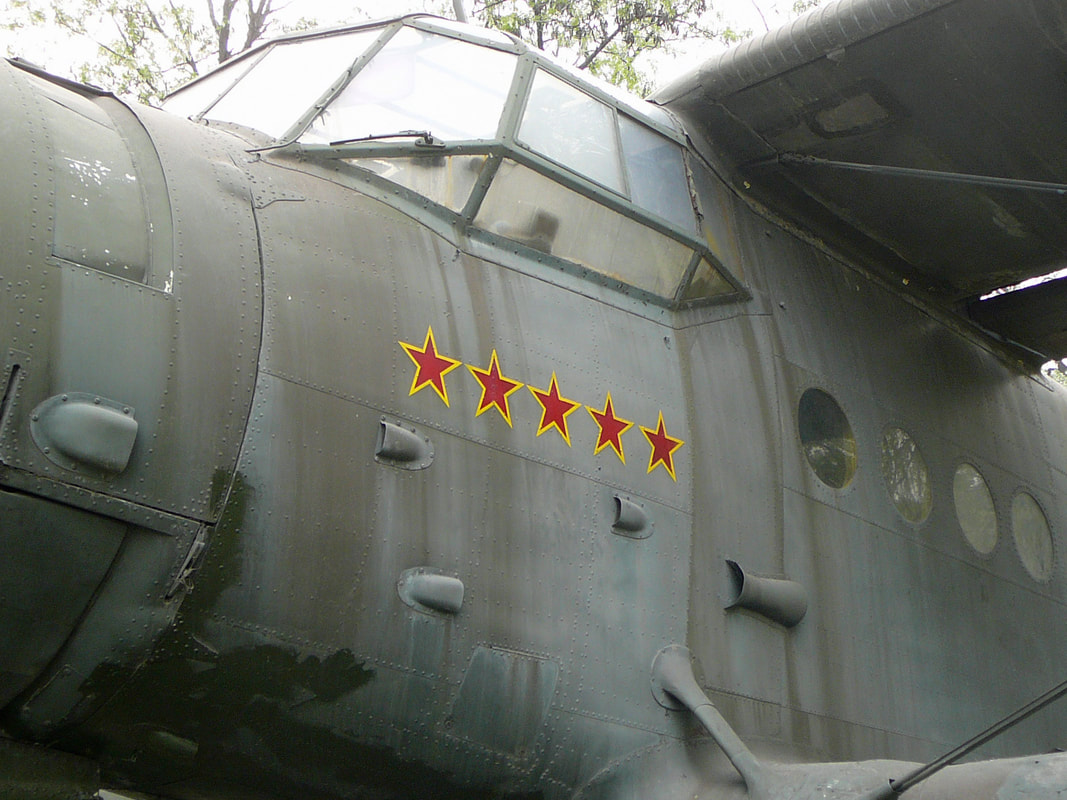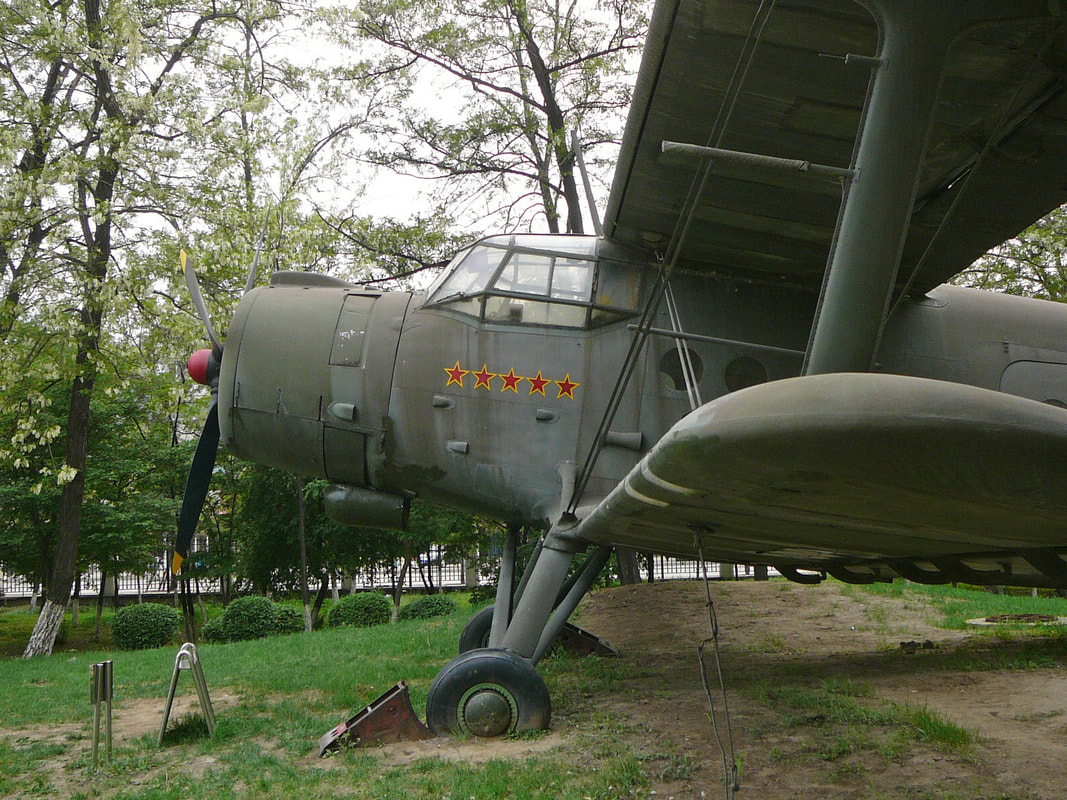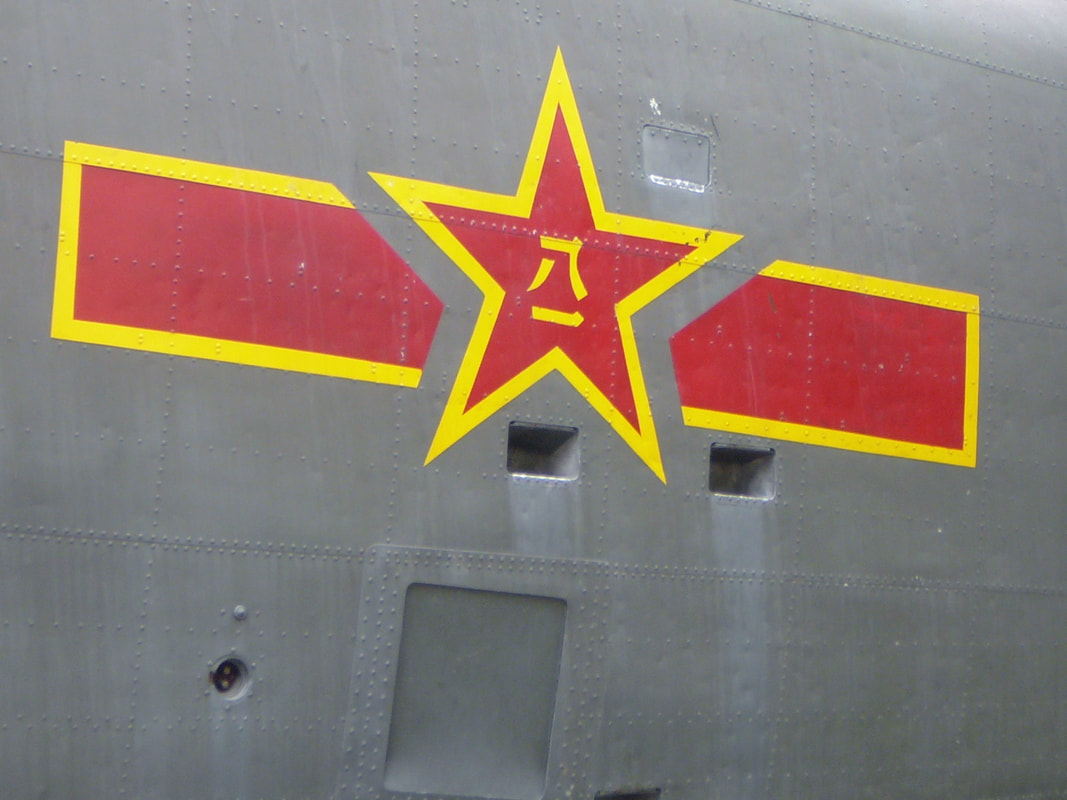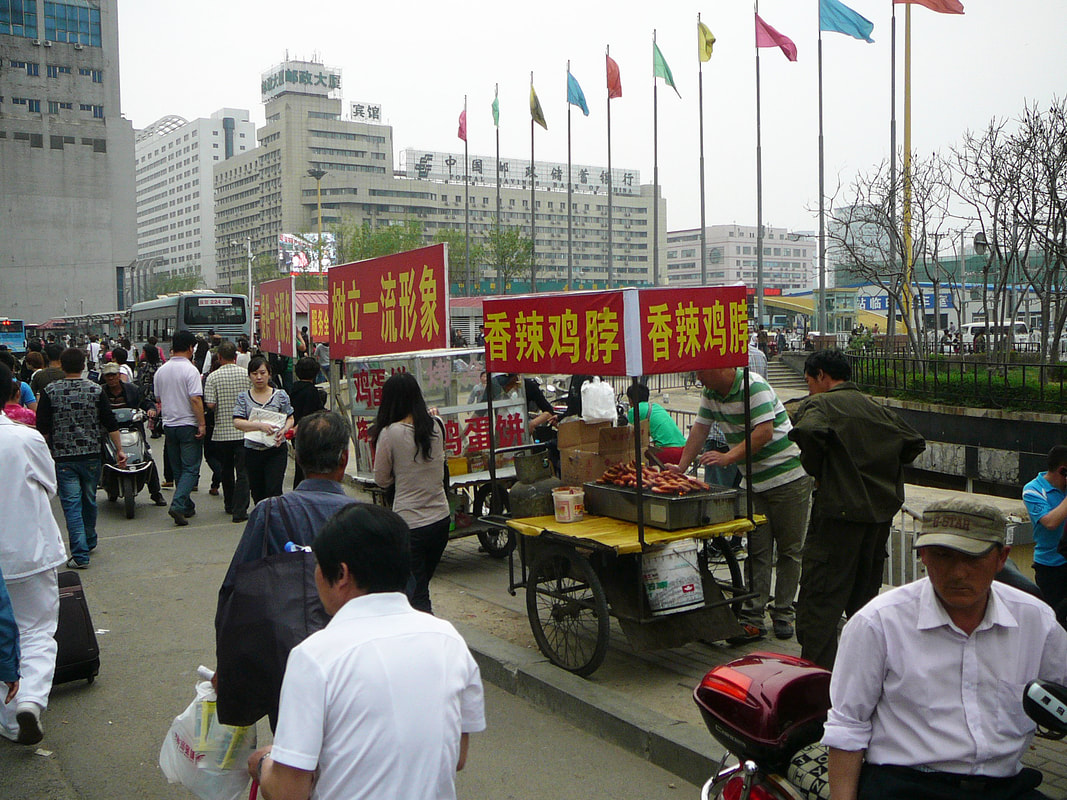Shenyang Aviation Museum, China
by Jan Koppen
After an aviation-tour in North-Korea, several tour members and I flew on May 19, 2012, onboard Air Koryo IL-62M, P-885, from Pyongyang to Shenyang, China. In Shenyang, I visited the Aviation Museum. Enjoy the pics and captions.
Shenyang Aircraft Corporation is a Chinese civilian and military aircraft manufacturer located in Shenyang. Founded in 1951 as the classified 112 Factory, it is the oldest aircraft manufacturer in the People's Republic of China. The company mainly focuses on designing and manufacturing civilian and military aircraft.
In November, 2017, the Shenyang Aircraft Museum opened its halls. The aim is to tell the history of the aviation history in China. Th
The museum mostly contains various generations of fighter jets used between 1936 – 2011.
The museum mostly contains various generations of fighter jets used between 1936 – 2011.
Shenyang J-5 "56719".
Shenyang F-5T "71938" is a trainer fighter-jet.
Bare metal Shenyang fighter-jet trainer is seen here on display at SAC.
Shenyang J-8IIACT "99913".
The engine air intakes and splitter plates of Chinese Air Force Shenyang J-8IIIACT are clearly visible in this picture.
A splitter plate is a component in some jet aircraft, used to control the airflow into the engine. Where the engine air intake is mounted partway back along the fuselage or under the wing, the splitter plate diverts the boundary layer away from the engine intake. It is a form of boundary layer control.
"99913" canards are clearly visible in this picture.
A canard is an aeronautical arrangement wherein a small forewing or foreplane is placed forward of the main wing of a fixed-wing aircraft.
Rather than use the conventional tailplane configuration found on most aircraft, an aircraft designer may adopt the canard configuration to reduce the main wing loading, to better control the main wing airflow, or to increase the aircraft’s maneuverability, especially at high angles of attack or during a stall.
Rather than use the conventional tailplane configuration found on most aircraft, an aircraft designer may adopt the canard configuration to reduce the main wing loading, to better control the main wing airflow, or to increase the aircraft’s maneuverability, especially at high angles of attack or during a stall.
My fellow tour member, is inspecting the cockpit "99913".
Shenyang J-7 "66117". The Chengdu J-7; ( third generation export version F-7; NATO reporting name: Fishcan) is a People's Republic of China license-built version of the Soviet Mikoyan-Gurevich MiG-21. Though production ceased in 2013, it continues to serve, mostly as an interceptor, in several air forces, including the People's Liberation Army Air Force.
"69705" is a Shenyang J-8.
A nice line-up of Chinese hardware. One can see the Shenyang J-8, Nanchang Q-5 and the Shenyang J-6.
White looks better and when it gets old and dull, it still looks good compared to a dark colored plane. Dark colors fade faster, dull, and when paint flakes off it just looks terrible.
Shenyang JJ-6 "70116" is a trainer.
This Shenyang JJ-6's speedbrakes are clearly visible in this pic.
A nice line-up of several SAC products.
Face-to-face with Shenyang J-6III "69805".
It had been clouded all afternoon.
Shenyang J-6 "63923".
Nanchang Q-5 "65604".
The Nanchang Q-5 is not appropriate is this SAC museum.
"65604" is a Nanchang Q-5. The Nanchang Q-5; NATO reporting name: Fantan), also known as the A-5 in its export versions, is a Chinese-built jet ground-attack aircraft capable of supersonic speed in level flight, which is similar to its predecessor Soviet MiG-19. However, the aircraft is predominantly flown at subsonic speeds due to its primary role being close air support.
"70417" is a Nanchang CJ-6.
The Nanchang CJ-6 is based at the Russian Yak-52.
Harbin Y-5 "3238" stands out against the gloom of a May day at Shenyang Aviation Museum Heathrow in 2012.
Distinctive paddle blades absorb the 1000 hp from the Shvetsov ASh-62 engine on this Air Shega Nanchang Y-5 parked at Shenyang, China, in May 2012. The ASh-62 was a development of the Wright R-1820 Cyclone that had been built in Russia under licence.
China also built the Antonov An-2 under license and named them; - Nanchang Y-5.
Time for a snack...!
- The End -
